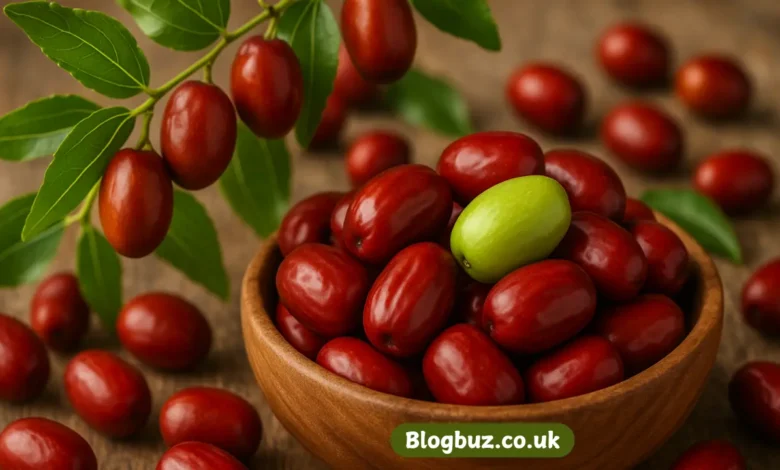Žižole: The Forgotten Superfruit Making a Comeback

Introduction: What Are Žižole?
Žižole, also known as jujube, Chinese date, or red date, are the small, sweet fruits of the Ziziphus jujuba tree. While this fruit has been popular in Asian and Mediterranean cultures for centuries, it remains relatively underappreciated in many parts of the world. But that’s beginning to change. Health-conscious consumers, herbal medicine enthusiasts, and culinary explorers are rediscovering the benefits of žižole for wellness, energy, and delicious natural nutrition. This article dives deep into everything you need to know about žižole — from its origin and health benefits to how you can develop, eat, or even sell this fantastic fruit.
The Botanical Identity of Žižole
Žižole originates from a hardy tree or shrub known as Ziziphus jujuba, a member of the Rhamnaceae (buckthorn) family. The tree thrives in warm, arid, and semi-tropical regions, producing olive-sized fruit that starts green, turns red-brown when mature, and can be eaten fresh, dried, or cooked.
The žižole tree is deciduous, often reaching a height of 5 to 10 meters. It has glossy green leaves, thorny branches, and small yellowish-green flowers that bloom in early summer. By autumn, it yields dozens of sweet, crisp fruits with thin, edible skin and a single pit.
A Brief History of Žižole
Žižole has a rich, ancient history.
- Origins: Native to China, where they’ve been cultivated for more than 4,000 years.
- Cultural Spread: Eventually introduced to Korea, India, the Middle East, Southern Europe, and North Africa.
- In Europe, žižole is part of traditional harvest celebrations in countries such as Croatia, Italy, and Slovenia. It is often transformed into sweet syrups, teas, or rakija (a type of fruit brandy).
- In Traditional Chinese Medicine (TCM), dates are considered a tonic fruit, often used to calm the mind, nourish the blood, and support digestive and immune health in Asia.
Health Benefits of Žižole – Nature’s Superfruit
If there’s one reason žižole is gaining popularity again, it’s their exceptional nutritional profile and medicinal value. Here’s what makes this fruit so powerful:
Rich in Antioxidants
Žižole are packed with polyphenols and flavonoids that help neutralize free radicals in the body, reducing oxidative stress and slowing cellular aging.
High in Vitamin C
100g of fresh žižole can provide over 60–80% of your daily Vitamin C needs — essential for maintaining immunity, promoting skin health, and aiding in wound healing.
Good Source of Minerals
They contain iron, potassium, calcium, magnesium, and phosphorus, which support healthy blood, heart rhythms, bones, and nerve function.
Natural Sedative Properties
Traditional uses of žižole include treating insomnia, anxiety, and restlessness. Compounds like saponins and jujuboside A are believed to have soothing effects on the nervous system.
Supports Digestion
The dietary fiber in žižole promotes healthy bowel movement, while their natural enzymes help ease bloating and indigestion.
Anti-inflammatory and Immune Support
Bioactive compounds in žižole have been shown to exhibit anti-inflammatory, antibacterial, and antiviral properties in multiple studies.
Žižole Nutrition Facts (Per 100g – Fresh)
| Nutrient | Amount |
|---|---|
| Calories | 79 kcal |
| Carbohydrates | 20 g |
| Dietary Fiber | 2.6 g |
| Vitamin C | 69 mg |
| Potassium | 250 mg |
| Iron | 0.5 mg |
| Protein | 1 g |
| Fat | 0.2 g |
How to Eat Žižole – Culinary Uses
Žižole are incredibly versatile. They can be eaten in various forms depending on ripeness and preparation:
Fresh
When harvested early, žižole has a crisp texture and apple-like taste. They’re great in fruit bowls, salads, or eaten whole like an apple.
Dried
Once dried, žižole becomes chewy and sweet, similar to dates or figs. Dried žižole are excellent in:
- Trail mixes
- Herbal teas
- Cereal or yogurt toppings
- Baking (e.g., in bread or muffins)
Syrups and Preserves
In the Balkans and parts of Italy, žižole are boiled with sugar and lemon to make a thick syrup or jam—perfect for winter immune support.
Jujube Tea
A well-known remedy in Asia, jujube tea is made by boiling dried žižole with ginger and cinnamon. It’s believed to improve sleep, boost immunity, and reduce stress.
Alcoholic Infusions
In Croatia and Montenegro, žižole are soaked in rakija or brandy to create a warming herbal liqueur, which is both festive and medicinal.
Where to Find Žižole Today
Although not yet mainstream globally, žižole is available in:
Asia & Europe
- Farmers markets in rural China, India, Turkey, Croatia, and Italy.
- Herbal and Ayurvedic stores.
- Specialty organic markets.
🇺🇸 North America
- Chinese or Korean supermarkets (look in the dried fruits section).
- Online herbal retailers (e.g., Mountain Rose Herbs, iHerb).
- Some farmer’s markets in California, Arizona, or Texas.
How to Grow Žižole – The Hardy Backyard Tree
If you have a garden or even a sunny balcony, you can grow your žižole tree. Here’s a simple guide:
Soil & Sunlight
- Prefers well-drained, sandy, or loamy soil.
- Requires full sunlight (6 hours or more per day).
- Tolerates poor soil but not waterlogging.
Climate
- Thrives in USDA zones 6–10.
- Tolerant of drought once established.
- It needs chilling hours in winter to fruit well.
Planting & Maintenance
- Plant bare-root or grafted trees in early spring.
- Space at least 10–15 ft apart.
- Prune lightly to shape during dormancy.
- Fertilize with compost or a low-nitrogen mix in spring.
Harvesting
- Žižole fruit matures in late summer to autumn.
- Pick when reddish-brown and slightly soft.
- It can be eaten immediately or dried for storage.
Žižole vs. Dates: A Common Comparison
While žižole are sometimes called “red dates,” they differ from Medjool or Deglet Noor dates:
| Feature | Žižole (Jujube) | Dates (Phoenix dactylifera) |
|---|---|---|
| Origin | China | Middle East / North Africa |
| Texture | Crisp (fresh), chewy (dried) | Always soft and sticky |
| Calories (per 100g) | ~79 kcal | ~277 kcal |
| Sugar Content | Lower | Higher |
| Vitamin C | Very high | Very low |
| GI (Glycemic Index) | Lower (~25–30) | Higher (~42–55) |
Žižole in Traditional Medicine
In Traditional Chinese Medicine (TCM), žižole is a shen tonic — calming the spirit and nourishing blood and qi. They are often used for:
- Insomnia and nightmares
- Menstrual disorders
- Weak immunity
- Poor appetite or fatigue
- Skin issues and premature aging
Why Žižole Deserves a Place in Modern Diets
With today’s growing interest in natural wellness, plant-based nutrition, and ancient superfoods, žižole is perfectly aligned with what consumers are looking for:
- Low in calories, high in nutrients
- Caffeine-free energy and mood support
- Natural sleep enhancer and anti-stress remedy
- Sustainable and drought-tolerant to grow
Adding žižole to your life—whether in your kitchen, garden, or health routine—is a small but powerful step toward better well-being.
Conclusion
Žižole may be small, but their impact on health, history, and taste is immense. These crisp, sweet, and medicinally potent fruits have stood the test of time for thousands of years—and now they’re making a much-deserved comeback.
You May Also Read: TimesHealthMag Nutrition: The Science-Backed Path to Healthy Eating and Sustainable Wellness




